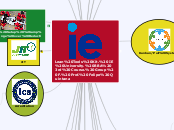5 "S"
5S in Office
Relevant examples video
Relevant Video explanation
Jidoka
Kaizen
Kaizen at Toyota: Relevant Video
Kaizen Office
Kaizen Toyota
Kanban/Pull System
Pull: Production only starts when we receive the Customer Order
Poka Yoke
Hoshin Kanri
Long Term & Strategic planning
Standarditation
PDCA
Solving Problems Tools:
Ishikawa Diagram. Finding Multiple Causes of a problem
5 Why's tool. Finding the spirit of the problem (Strategic cause)
Types of Waste
Toyota Service Concept whole picture
Lean Tools Kit
Total Productive Maintenance
Implementation
Relevant video
Genchi Genbutsu (Go&See)
Toyota Go&See
Gemba Walk Tool
SMED (Setup & Change over Reduction)
JIT
Acreditation
VSM (Value Stream Mapping)
Flow Chart
Customer Journey Mapping
Process Map
Cells Manufacturing & Lay Out Decision
AMT (Advanced Manufacturing Technology)
SRM (Supplier Relationship Management)
Subtema
